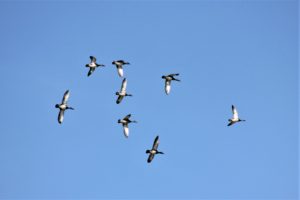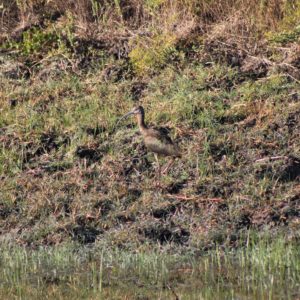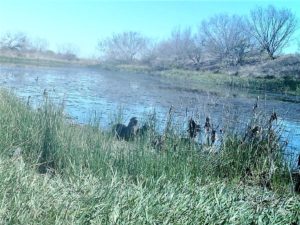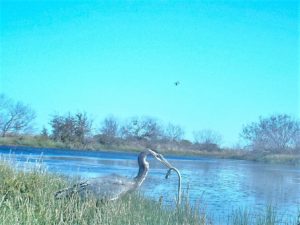Week 22:
This past week saw an increase in raptor and waterfowl diversity, with northern harriers (Circus cyaneus) and crested caracaras (Caracara cheriway) making an appearance for the former and gadwalls (Anas strepera), mallards (Anas platyrhynchos), ring-necked ducks (Aythya collaris), canvasbacks (Aythya valisineria), and redheads (Aythya americana) making their debut at the farm this season for the latter. I was also able to observe three white-faced ibis (Plegadis chihi) in their nonbreeding plumage, which actually lacks the eponymous “white face” as well as the reddish head, neck, and breast. The iridescent olive coloration on the wings was very fetching nonetheless.
Later this week, I will be marking larger mesquite trees for later cut-stumping in areas targeted for native grassland restoration. The trees are marked with spray paint before all the leaves are gone for the winter so that when we begin cut-stumping, we do not overlap control efforts by removing any trees that were already successfully killed by the aerial spray earlier this year. Cut-stumping can take place at any time of the year, but we will conduct our efforts at some point in the winter to take advantage of the cooler weather.

Camera trapping is still ongoing, and I’ve managed to collect a few more favorites, including an inquisitive doe eyeing my camera in the trees, as well as a daylight coyote amble, an otter seen at a new location on the farm (pardon the camera angle, it got cowed between checks), and a great blue heron with a scaly snack. In the next few days, I will be prepping more cameras for an off-site project next week, accompanying Dr. Tomeček to South Texas to post said cameras at sites with fresh feral hog carcasses, in order to observe which scavenging species visit the site, thereby removing the guesswork about who’s actually coming to dinner. I will provide more details about that experience after the trip next week, and I look forward to sharing.
Dani Miller
Wildlife Biologist
Stiles Farm Foundation






